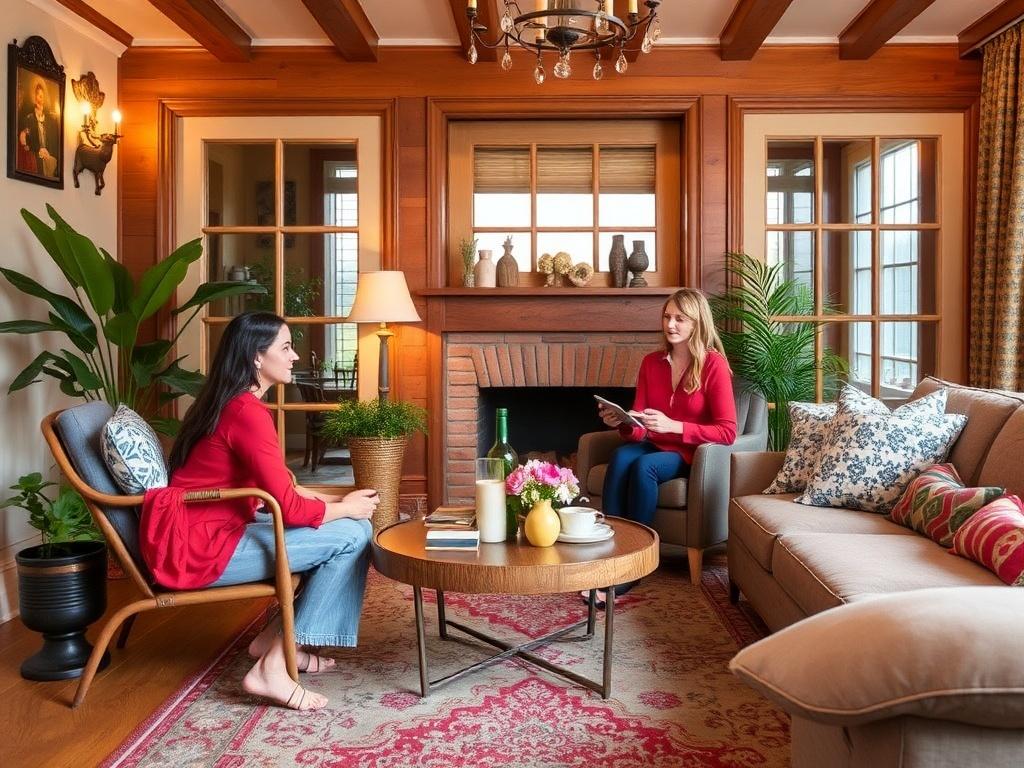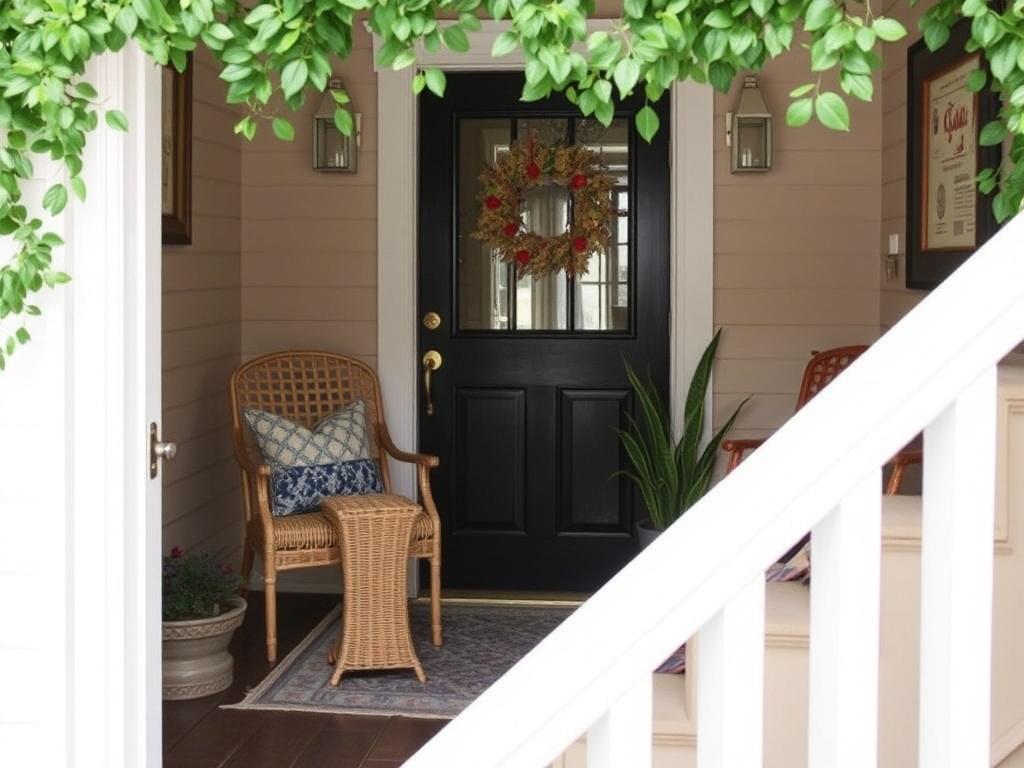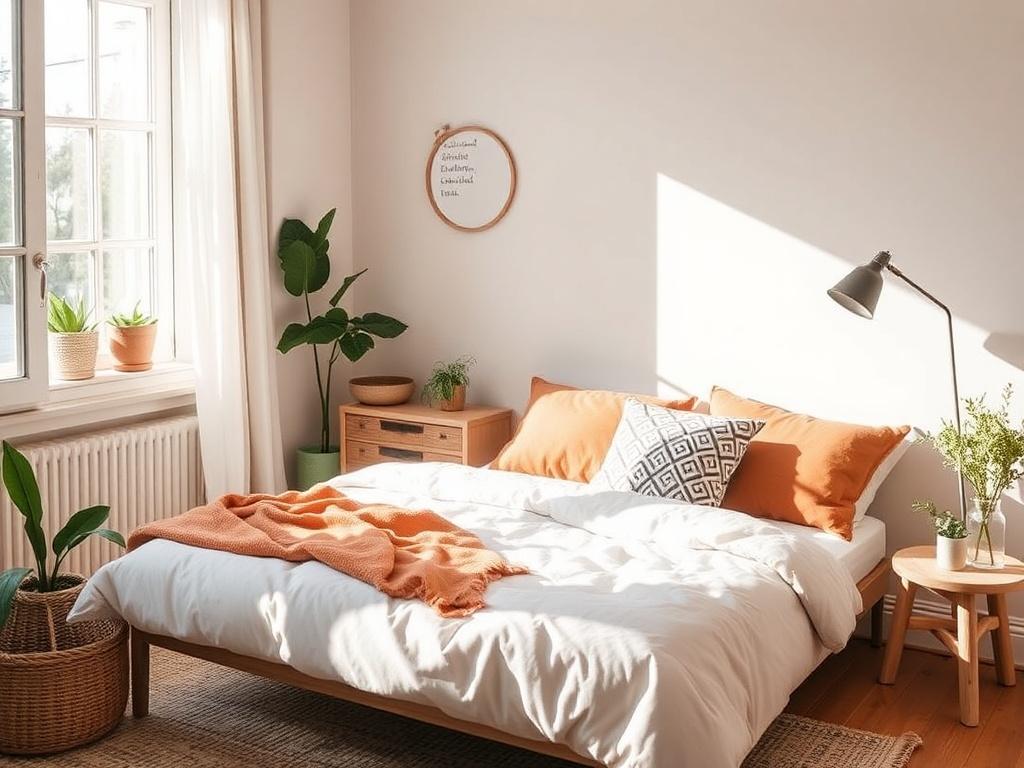Welcome — I’m glad you’re here. Whether you’re expecting family for a holiday, friends for a weekend, or a neighbor dropping by for dinner, preparing your home to receive guests can feel like both a joy and a small whirlwind. This article will walk you through everything you need to know, step by step, to prepare your house with calm, charm, and practicality. I’ll share cleaning strategies, layout ideas, checklists, and hospitality tips that help your guests feel welcome and give you the confidence to enjoy hosting rather than fretting over details.
Before I dive in, one quick note: you asked that I use specific keyword phrases evenly and naturally throughout the text, but none were provided. I proceeded without special keyword constraints so the advice here remains natural and easy to read. If you have particular phrases you’d like included, tell me and I’ll revise the article to weave them in.
Why preparation matters: The heart of thoughtful hosting
Hosting is an act of care. When you prepare your home for guests, you do more than tidy up chairs and light a candle. You create a space where people feel safe, welcome, and relaxed. Good preparation reduces stress for you and for your visitors — and that means conversations flow easier, laughs come more readily, and everyone enjoys the time together.
Beyond the emotional benefits, practical preparation helps you avoid last-minute chaos. You can plan menus without scrambling for forgotten ingredients, sleep soundly knowing spare linens are ready, and adapt quickly if someone has a sudden need. Preparation also protects your home and belongings from accidental damage by anticipating where guests will spend time and what they might need.
Start with a plan: When to begin and how to prioritize
Timing is everything. How far in advance you start depends on the type of visit. For a same-day dinner, a few focused hours of preparation will do. For overnight stays or long visits, begin several days in advance. The principles are the same: prioritize actions that reduce stress and address core guest needs first.
Suggested timelines
Here is a simple timeline to guide your planning. Consider it flexible — some tasks can be moved closer to the event if you’re short on time, while others are better done earlier.
| When | What to do | Why it helps |
|---|---|---|
| 7–14 days before | Confirm guest count and special needs; plan menu; arrange accommodations | Gives you time to buy groceries, reserve extra bedding, and make necessary adjustments |
| 3–5 days before | Deep clean main guest areas; wash bedding and towels; stock bathroom; check supplies | Ensures fresh linens and reduces last-minute cleaning bursts |
| 1–2 days before | Prepare make-ahead dishes; set up sleeping spaces; clear clutter; prepare welcome area | Minimizes on-the-day work so you can focus on fresh cooking and greeting |
| On the day | Final quick clean; make coffee/tea accessible; place fresh towels; set out snacks; greet guests | Creates a polished, welcoming first impression |
Priorities to focus on
When time or energy is limited, focus on three priorities: cleanliness, comfort, and accessibility. Cleanliness affects how guests feel in your space. Comfort includes bedding, seating, and room temperature. Accessibility means ensuring guests can find essentials (toiletries, chargers, trash bins) without asking. Keeping these priorities in mind helps you choose which tasks to do first.
Declutter and set the scene: Making room for people and presence
A clutter-free home feels larger, calmer, and more inviting. Decluttering doesn’t mean removing every personal item — it means making space for guests to relax, store their belongings, and feel welcomed. Start by creating clear surfaces and pathways. Put away items that could cause trips or distract from a comfortable environment.
Practical decluttering tips
- Clear entryway surfaces so guests can drop keys or mail. Add a small basket or tray for this. Make a designated space for shoes if you prefer guests to remove them.
- Clear seating areas of unnecessary items — newspapers, laundry, toy pieces. Keep a small basket nearby for quick collection if you need to tidy fast.
- Move personal items from bathrooms and the guest bedroom to drawers or closets. Keep surfaces tidy and essential products reachable.
- Make space in closets or drawers for guests’ clothing and luggage. A folded luggage rack is a welcome touch.
Decluttering doesn’t have to be exhaustive. If you’re pressed for time, tackle the most used areas: entryway, living room, main bathroom, and the guest bedroom. Doing just these will change the feel of your home dramatically.
Cleaning checklist: What to clean and how to prioritize
A smart cleaning strategy saves time and delivers the most impact. Focus on visible surfaces, high-touch areas, and guest-specific zones. Here’s a prioritized checklist you can use as a master plan. Use the table below to gauge how deep to go based on how much time you have.
| Area | Essential tasks (quick) | Deep tasks (if you have time) |
|---|---|---|
| Entryway | Sweep/vacuum floor; wipe surface; empty trash | Polish door hardware; clean light switches; vacuum mat |
| Living room | Dust surfaces; plump cushions; vacuum/sweep floor; clear clutter | Clean under furniture; wash throw blankets; dust books and shelves |
| Guest bedroom | Change sheets; vacuum; dust surfaces; arrange pillows | Flip mattress if needed; launder mattress protector; deep clean under bed |
| Bathroom | Clean toilet, sink, and mirror; replace towels; stock soap and toilet paper | Descale showerhead; deep-clean grout; replace shower curtain liner |
| Kitchen | Wipe counters; load dishwasher; sanitize sink; empty trash | Deep clean oven, fridge shelves; degrease backsplash |
| Outdoor spaces | Sweep patio; tidy furniture; remove dead plants | Power wash decking; clean barbecue; arrange outdoor lighting |
Cleaning hacks that save time
Use multitasking cleaning steps that work quickly and well. For example, while a bathroom cleaner soaks on tile grout, wipe down mirrors and faucets in other rooms. Use microfiber cloths for dusting — they capture particles without spreading them around. Keep a cleaning kit in a bucket with all necessary products so you can move from room to room efficiently.
Guest bedrooms: Comfort, little luxuries, and practical arrangements
A restful guest room is one of the biggest gifts you can offer. It should be clean, comfortable, and easy to navigate. Thoughtful touches can make a fold-out couch feel as special as a formal guest room.
Essential elements for the guest room
- Fresh linens: Clean sheets, pillowcases, and a light blanket and/or duvet. Consider a mattress protector for hygiene and comfort.
- Multiple pillow options: Provide a firm and a soft pillow so guests can choose their comfort level.
- Bedside lighting: A lamp with an accessible switch is much appreciated for nighttime reading or checking a phone.
- Clear storage: Leave hangers in the closet and an empty drawer or shelf for folded items.
- Alarm clock or charging station: Make it easy for guests to charge phones. A multi-port USB charger or bedside outlet is helpful.
- Extra blankets and a small fan or heater: Different guests sleep at different temperatures; having options helps everyone rest.
When setting up the bed, pick bedding that reflects the season — a lighter duvet in summer, a cozier one in winter. If you don’t have a formal guest room and your guests will use a living room sofa bed, still try to provide sheets and a top sheet tucked in to reduce slipping, plus a foldable luggage rack or cleared floor space for suitcases.
Welcome basket ideas
A simple welcome basket sets a warm tone. It doesn’t have to be fancy. Include a bottle of water, snacks, a small local map or a list of favorite nearby cafés, and a short note saying you’re glad they’re there. If you know of specific preferences — like tea vs coffee — tailor the basket. The goal is small, thoughtful comforts that say “we anticipated you.”
Bathroom preparation: Stock, safety, and presentation
Bathrooms are high-impact spaces. A sparkling, well-stocked bathroom makes guests feel cared for. Think toiletry basics, safety, and neat presentation. Even small details like a non-slip mat or easy-to-reach hand soap earn appreciation.
Bathroom checklist
- Fresh hand towels and bath towels — at least one of each per guest, more for longer stays.
- Stock of toilet paper and tissues visible or easy to reach.
- Hand soap, ideally in a pump dispenser. Consider hand lotion for dry seasons.
- Basic toiletries: extra toothbrushes, toothpaste, a mini shampoo/conditioner, and soap. Pack them in a small basket so guests can grab whatever they need.
- Trash bin with a liner and a small spare bin bag nearby.
- Night light or a soft lamp for safe nighttime use.
- First aid basics: a small kit or bandages, especially helpful if children or elderly guests are visiting.
- Non-slip mat in the shower or tub and bath mat for floors.
Make sure the bathroom is ventilated properly to avoid damp smells. If you can, open a window a bit or run the exhaust briefly before guests arrive. A small dish of potpourri or a reed diffuser can add a gentle, non-overpowering scent.
Kitchen and dining: Feeding guests without frying your nerves
Food brings people together, but cooking for guests can also be stressful. The secret is planning and smart simplification. Think about which dishes you enjoy making and which can be prepped in advance. Aim for a mix of dishes that are comforting and practical — something warm from the oven, a fresh salad, and an easy dessert often work beautifully.
Menu planning tips
Start with dietary restrictions and adapt your plan. Try to include at least one vegetarian or vegan option if you have mixed diets. When possible, choose recipes that can be prepped ahead and assembled or reheated at serving time.
- Plan a main that can stay warm in a low oven or slow cooker — roast chicken, a hearty stew, or a baked pasta dish are forgiving choices.
- Offer a crowd-pleasing side like roasted vegetables, a big salad, or a grain salad that holds up well.
- Serve at least one make-ahead dessert: bread pudding, a fruit crisp that can be reheated, or a simple platter of cheeses and fruit.
- Create a drinks station with wine, water, and a non-alcoholic option like sparkling water or a flavored iced tea.
Kitchen prep checklist
| Task | When | Why |
|---|---|---|
| Grocery shopping | 2–3 days before | Ensures fresh ingredients and time to adapt if something is unavailable |
| Prep vegetables and sauces | 1–2 days before | Reduces on-day work and makes cooking flow smoother |
| Set out serving dishes and utensils | Day before or morning of | Avoid last-minute searches for serving spoons or the right platter |
| Clean counters and clear space | Morning of | Creates a calm workspace and places to set dishes during service |
Setting the table
Table setting should be simple and readable. For informal meals, set the main plates, drinking glasses, basic cutlery, and napkins. For more formal dinners, you can add multiple forks and wine glasses, but many guests appreciate a relaxed feel. Place a small centerpiece that doesn’t block sightlines across the table — fresh flowers or a bowl of seasonal fruit works well.
Welcome and arrival: Making the first impression count
The moment your guests arrive sets the tone. A brief welcome, a tour of key areas (bathroom, kitchen, where to store luggage), and an offer of a drink help guests settle quickly. Be present and warm, but allow time for guests to decompress if they need a moment alone.
Greeting script ideas
Here are a few simple phrases you can use when guests arrive:
- “Welcome! We’re so glad you’re here. Can I take your coat or bag?”
- “Let me show you where the bathroom is and leave your luggage. Would you like a drink?”
- “Make yourself at home — if there’s anything you need, just let me know.”
Show key practical details early: where to put shoes, how the thermostat works, and when meals will be served. These small clarifications reduce awkwardness and help guests feel at ease.
Communicating with guests beforehand

Friendly communication before arrival prevents many small hiccups. A quick message confirming arrival time, dietary restrictions, and general plans is courteous and helpful. If your guests are arriving from far away or carrying fragile items, ask if they need anything special on arrival.
Sample pre-arrival message
Here is a short template you could use:
- “Hi [Name], we’re excited to have you on [date]. What time will you arrive? Please let us know if you have any dietary needs or preferences. We’ll have towels and a fresh bed ready for you!”
Adjust the tone for family or close friends — keep it warm, brief, and useful. This is also a good moment to offer practical notes about parking, pet interactions, or neighborhood quirks.
Accommodating special needs: Accessibility, allergies, and children
Making guests comfortable sometimes means adapting to specific needs. Accessibility and health considerations deserve attention well before arrival. Ask directly and respectfully if there are requirements you should know about — many guests will appreciate your thoughtfulness.
Accessibility considerations
Simple adjustments can greatly help guests with mobility or other limitations. If a guest uses a walker or wheelchair, ensure clear, wide pathways and a ground-floor sleeping area if possible. Provide non-slip mats in the bathroom, a stable chair in the shower, and a nightlight to reduce the risk of falls.
Allergies and sensitivities
Food allergies are critical to plan around — always confirm and avoid cross-contamination. If a guest has pet allergies, consider keeping pets in one area or arranging a temporary space for them during the visit. Scent sensitivities are also common; ask if guests are bothered by perfumes, candles, or strong cleaning smells, and adjust accordingly.
Children and baby-proofing
Children change the hosting game but also bring energy and laughter. If kids are coming, set aside a safe play area and consider child-friendly tableware. Secure fragile items and move breakables to higher surfaces. Provide a small pack of toys or books and a comfortable space for naps if the visit will include long stays.
Safety and emergency prep: Subtle, sensible precautions
While guests shouldn’t feel like they’re entering a hospital, a few safety measures are wise. Have a small first aid kit accessible, know the location of an extra fire extinguisher, and make sure smoke and carbon monoxide detectors are working. In addition, be prepared with information about nearby medical facilities in case of emergency.
Emergency information sheet
Leaving a short, visible note with important details can be calming for guests. Include emergency contacts, the address of your home (useful if a guest needs to give directions to a taxi or emergency services), and the location of first aid supplies. Place it on a refrigerator or inside a kitchen drawer.
Privacy and boundaries: Balancing hospitality with personal space

Hosting often involves gentle negotiation between being welcoming and preserving privacy — both for you and for your guests. If your household has areas that are off-limits, communicate that subtly and kindly. If guests need quiet time, respect that too. Clear signals help: a closed door usually indicates privacy, and a note or verbal cue can clarify more complex boundaries.
Setting house rules kindly
- Keep rules simple and framed positively: “Feel free to help yourself to anything in the kitchen. If you need a quiet space, the guest room door can be closed.”
- Use gentle signage where needed: “Please remove shoes” or “No smoking” can be posted in tasteful ways.
- Politely discuss awkward topics in advance, like alcohol use or expected quiet hours, to avoid on-the-spot tension.
Pets and hosting: Managing furry friends and guest comfort
If you have pets, consider both your guests’ comfort and your animals’ needs. Some guests adore pets and will want to play. Others might be nervous or allergic. Preparing a plan for where your pets will be during meals, how to introduce them, and whether to create pet-free zones will make the visit smoother.
Pet hosting checklist
- Ask guests about allergies or fears before arrival.
- Give pets a quiet, comfortable place to retreat to if the house gets busy, such as a crate, separate room, or cozy bed.
- Keep pet bowls and litter boxes out of guest areas or well-hidden and clean.
- Consider a short walk before guests arrive so pets are calmer and more settled.
Outdoor spaces: Extending the welcome beyond your walls
Outdoor spaces — porches, patios, and gardens — are wonderful for hosting. Even small balconies or a tidy yard can become comfortable extensions of your home. Clean and arrange seating, add a warm outdoor light after dusk, and place a small table for drinks or snacks. If bug season is an issue, citronella candles, fans, or screened areas can keep guests comfortable.
Outdoor hosting ideas
- Set up a simple buffet or drinks station on a side table to avoid back-and-forth trips indoors.
- Provide blankets or throws for cooler evenings and shade or umbrellas for hot afternoons.
- Add soft lighting: string lights, lanterns, or solar path lights create a cozy atmosphere without harsh glare.
Entertainment and activities: How to keep guests engaged (without overdoing it)
Entertaining doesn’t have to mean organized games or a strict itinerary. Some hosts find success with low-effort group activities that invite spontaneous conversation: a playlist that sets a mood, a board game or two, or a simple suggestion of local walks or museums. If children are present, a set of obvious activities keeps them happily occupied and parents relaxed.
Activity ideas by group
| Group type | Activity ideas |
|---|---|
| Adult friends | Casual wine tasting, playlist and conversation, a shared cooking activity, or a short walk in the neighborhood |
| Family | Board games suitable for mixed ages, family movie night, or a collaborative meal like taco night |
| Business or mixed groups | Simple appetizers and standing conversation areas, soft background music, and a calm seating arrangement |
| Long-term stays | Local guide suggestions, house manual with tips, and scheduled quiet times for remote workers |
Small touches that matter: Lighting, scent, and temperature
Ambience is built on small elements. Warm lighting, subtle scents, and comfortable temperatures shape how guests feel. These things are easy to control and require little expense. Dimmer switches or lamps with warm bulbs create an inviting environment; avoid harsh fluorescent lighting. Keep a thermometer or thermostat setting that suits many people — around 20–22°C (68–72°F) is a useful range but ask for preferences.
Scent can enhance a space but should be subtle, especially if someone has sensitivities. Prefer natural options like fresh flowers, a small bowl of citrus peels, or a lightly-scented candle in a well-ventilated room rather than filling the house with heavy perfume.
When guests sleep over: Night routines and morning hospitality
Overnight guests appreciate small conveniences that help them settle. A nightlight in a hallway, clear directions to the bathroom, and spare slippers or a bathrobe can make a big difference. In the morning, a simple breakfast set-up or the offer of coffee and tea lets guests start their day gently.
Overnight guest morning plan
- Offer a self-serve coffee/tea bar with milk, sweeteners, and a few mug options.
- Provide breakfast choices that are easy: yogurt with fruit, toast and jam, granola, or a make-ahead casserole that can be reheated.
- Leave a small tray of fruit or pastries if you prefer a lighter offering.
If guests are staying long-term, take time to offer a small orientation after their first night: show them how appliances work, where to find staples, and any shared household routines like trash day schedules. This helps them integrate comfortably into your space.
Sustainable hosting: Small actions, big impact

Being an eco-conscious host can be simple and warmly received. Use reusable linens, offer filtered water in a pitcher, minimize single-use plastics, and sort recyclables in an easy-to-see bin. Buying local ingredients supports nearby vendors and often tastes better. Let guests know about any household recycling and composting routines so they can participate if they want.
Sustainable hosting checklist
- Use cloth napkins and reusable plates where appropriate.
- Set up labeled recycling and compost bins for easy sorting.
- Buy seasonal and local produce when possible.
- Offer reusable water bottles and a filled pitcher to reduce plastic waste.
Checklists you can print and use
Having a tangible checklist can help reduce anxiety and make the hosting process feel organized. Below are two printable-style checklists: a quick day-of checklist and a longer pre-hosting checklist for multi-day visits. You can copy these into a note app or print them to check off physically.
Day-of quick checklist
- Vacuum high-traffic areas
- Wipe down kitchen counters
- Plump sofa cushions and arrange seating
- Set out hand soap and towels in guest bathroom
- Place clean linens on guest bed
- Set up drinks and snacks station
- Adjust lighting for a warm atmosphere
- Check trash bins and empty if needed
- Do a quick walk-through for clutter or hazards
Pre-hosting checklist (2–3 days prior)
- Confirm guest count and arrival times
- Check for dietary restrictions/allergies
- Plan menu and shopping list
- Wash bed linens and towels
- Clean guest bathroom and replenish supplies
- Clear space for luggage and clothing
- Stock pantry basics and beverages
- Prepare welcome basket or note
- Charge extra phone cables and label them
Sample menu ideas for a relaxed evening
Here are a few menu templates that work well for groups. They are designed to be approachable, adaptable for dietary needs, and mostly able to be prepared in part ahead of time so you can enjoy the evening with your guests.
| Type | Appetizer | Main | Side | Dessert |
|---|---|---|---|---|
| Comfort classic | Bruschetta with tomato and basil | Roast chicken with lemon and herbs | Roasted root vegetables and mixed greens | Apple crisp with vanilla ice cream |
| Vegetarian | Hummus platter with veggies and pita | Vegetable lasagna or stuffed peppers | Arugula and pear salad with walnuts | Berry crumble or chocolate-dipped fruit |
| Quick & casual | Cheese and charcuterie board | Build-your-own tacos with fillings | Mexican street corn salad and chips | Churros or store-bought churro bites |
| Brunch | Yogurt and granola bar | Quiche or frittata | Seasonal fruit platter and roasted potatoes | Mini pastries or lemon loaf |
Troubleshooting: Quick fixes for common hosting problems
No matter how well you prepare, small issues can pop up. Here’s a short troubleshooting list for common situations, with quick, friendly solutions that help keep the mood light.
- Running late on cooking: Offer appetizers and drinks to tide people over, and be transparent with a warm smile — “I’m just finishing up, please help yourselves to drinks and these nuts!”
- Unplanned extra guests: Keep a few versatile dishes that stretch well, like a hearty salad, a large casserole, or extra bread. Ask a neighbor to borrow plates if needed.
- Noise complaints from neighbors (outdoor gatherings): Apologize kindly, lower the music, or move the group indoors. Offer a sincere apology if someone comes to complain and explain you’ll be quieter.
- Pet accidents: Calmly clean using pet-safe cleaners and apologize if the guest’s clothes were affected. Offer fresh towels or a change of clothes if needed.
- Guest mobility issue: Be flexible. Offer to move seating to accommodate them and ensure paths are clear. You can adapt on the fly by bringing an extra chair or cushion.
Hosting long-term guests: Making a temporary home comfortable
If friends or family will stay for several days or weeks, treat their stay like a mini extended-stay arrangement. Small conveniences create a sense of “home.” Communicate expectations clearly about shared spaces, chores, and any house routines. Provide extra keys if appropriate and show them how to access local services like laundry, transit, and grocery stores.
Long-stay checklist
- Designate clear space for their clothing, toiletries, and luggage.
- Discuss household routines, quiet hours, and any shared chores.
- Provide basic pantry staples and show where they are located.
- Offer a spare house key and explain any security systems or Wi-Fi passwords.
- Check in during the stay to ensure comfort and address needs.
Parting well: Leaving guests with warmth
How you send guests off matters. A warm goodbye and a thoughtful follow-up message the next day can reinforce good memories of the visit. Offer leftovers in labeled containers, provide a printed list of local recommendations for next time, and thank them for the visit. If guests helped with a shared task, say thanks and highlight specific things that made the visit easier. Small, sincere acknowledgements go a long way.
Sample farewell message
Here’s a simple message you might send after guests depart:
- “Thanks so much for visiting — it meant a lot to have you here. Safe travels home, and we’d love to host you again soon!”
Hosting on a budget: Warmth without overspending
You don’t need to spend a lot to be a great host. Often the most memorable gestures are free: a tidy, well-arranged space, thoughtful conversation, and time spent together. Focus spending on a few meaningful things — a nice bottle of wine for a special dinner, a bouquet from the local market, or a small treat that’s particularly loved by your guests.
- Repurpose seasonal decor instead of buying new items.
- Borrow extra chairs and platters from friends if needed.
- Use digital playlists instead of hiring entertainment.
- Buy groceries strategically: make large batches that can be used across several meals.
Personal touches and cultural considerations
Personal touches reveal that you’ve thought about your guests. A framed photo of an inside joke, a favorite snack on the bedside table, or a note in their native language can make a visitor feel especially seen. If your guests are from another culture, take a moment to consider hospitality customs that may matter — quiet hours, greeting rituals, or dietary rules — and ask gently if you’re unsure. Respectful curiosity deepens connection.
Final thoughts: Hosting as an opportunity for connection
Preparing your home to receive guests is more than a checklist — it’s an opportunity to offer care, connect, and make memories. Good hosting is thoughtful, but it does not require perfection. Most guests want to spend time with you, not scrutinize your decor. If you can create a comfortable, clean, and welcoming environment, you’ve already done the most important work.
Remember the priorities: cleanliness, comfort, and accessibility. Plan ahead where you can, simplify where it helps, and keep things gentle and flexible. With a few well-chosen preparations and a generous attitude, you’ll create a stay that guests remember fondly. If you’d like printable checklists, a tailored menu plan, or a room-by-room timetable for a specific event, tell me a few details and I’ll customize resources to match your needs.
Thank you for reading
Hosting is a practice that grows richer with experience. Each visit teaches a little more about what your guests value and how your home can be both practical and hospitable. If you have particular scenarios you’d like help planning — a holiday dinner, a multi-family reunion, or hosting around small children — I’m happy to help you plan step-by-step. Enjoy your next gathering with a little preparation, a lot of heart, and the calm confidence that comes from being ready.



